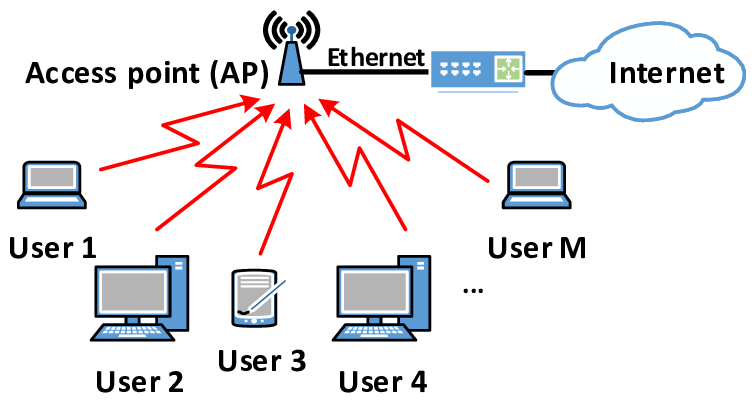What is a wireless LAN? We live in a period when technological progress is at its highest. In particular, there is a crucial element of network transmission in the technological world. There are two main kinds of network transmission, which include wired communication and wireless network transmission.

In this context, it can be comprehended that wireless LAN designates local transmission through the Internet, the communication existence through radio waves. In particular, the distribution takes place via radio waves which have an access point on the Internet.
Remarkably, there is a critical element of network communication in the world of technology. They are wired and connected in a wireless network. To simplify the previous question on “What is WiFi?” (Wireless local area networks) WLAN doesn’t want a wired Ethernet link.
Types of WLANs –
What is the access method used by Wireless LAN ? According to IEEE 802.11, WLANs work in two basic modes: infrastructure and ad hoc mode.
- Infrastructure mode – Mobile devices or clients establish a connection to an access point (AP), which in turn connects to the LAN or the Internet via a bridge. The client transfers frames to other clients via the AP.
- Ad hoc mode – customers transfer frames directly from peer to peer.
Advantages of WLAN –
- Flexibility: in radio coverage, nodes can communicate without other restrictions. Radio waves can penetrate walls, transmitters, and receivers can be located anywhere (not visible, for example, on devices, fences, etc.).
- Planning: only ad hoc wireless networks allow communication without prior planning. Each cable network requires wiring plans.
- Design: wireless networks allow the design of small independent devices that can keep in a pocket, for example. Cables restrict not only users but also designers of small laptops, PDAs, etc.
- Robustness: wireless networks can cope with disasters such as earthquakes, floods, etc.
- Cost: The cost of installing and continuing a WLAN is, on average, lower than the price of establishing and maintaining a traditional wired LAN for two reasons. First, adding additional users to a network does not add any cost once the first user has obtained wireless access to the wireless network through an access point. Second, the wireless LAN eliminates direct wiring and labor costs for installation and repair.
- Ease of use: the wireless LAN is easy to use, and users need very little new information to take advantage of WLANs.
Disadvantages of WLANs –
- Quality of service: The quality of WLAN is commonly lower than that of wired networks. The leading causes for this are the lower bandwidth due to radio transmission limitations, higher error rates due to interloping, and higher interruption fluctuations due to error correction and detection tools extended.
- Proprietary solutions: Due to the slow normalization process, many corporations have developed proprietary solutions that offer standardization and many innovative functions. Most components today comply with basic IEEE 802.11a or 802.11b standards.
- Restrictions: Multiple governments and non-governmental institutions around the world regulate operations and limit frequencies to minimize interference.
- Worldwide use: WLAN products are sold in all countries, so national and international frequency regulations must observe.
- Energy consumption: Devices that communicate over a wireless local area network regularly consume energy as well as wireless devices that run on batteries. The LAN design must take this into account and implement unique energy-saving modes and energy management functions.
LAN and Wi-Fi –
One of the most usual methods of creating a WLAN today is using Wi-Fi. It refers to a set of standards that relate to the collection of rules for electrical and electronic engineers that start with the number 802.11. Different Wi-Fi standards can be identified by their 802.11 standard amount, such as B. 802.11b or 802.11g, or by other more verbose names such as Wi-Fi 6 or Wireless G.
Also read: What is a System Administrator ?
In-home and work Wi-Fi networks, devices called access points typically look for connections from nearby computers. Often routers can efficiently route traffic over the local network and to and from the Internet. Routers often support multiple versions of the Wi-Fi standards so that they can help multiple generations of devices. However, when setting up a network, you need to make sure that all of your tools are compatible with it.
Most modern laptops and cell phones support Wi-Fi, and you can check the box on your device or its documentation to determine which versions of the standard it works with. You can purchase an external adapter if you need to communicate with another type of Wi-Fi network.



1 Comment
AffiliateLabz · February 16, 2020 at 2:48 AM
Great content! Super high-quality! Keep it up! 🙂